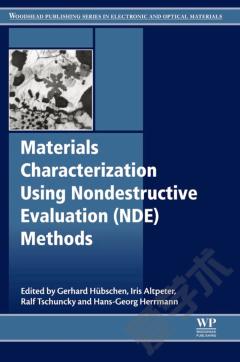Materials Characterization Using Nondestructive Evaluation (NDE) Methods
Materials Characterization Using Nondestructive Evaluation (NDE) Methods discusses NDT methods and how they are highly desirable for both long-term monitoring and short-term assessment of materials, providing crucial early warning that the fatigue life of a material has elapsed, thus helping to prevent service failures. Materials Characterization Using Nondestructive Evaluation (NDE) Methods gives an overview of established and new NDT techniques for the characterization of materials, with a focus on materials used in the automotive, aerospace, power plants, and infrastructure construction industries. Each chapter focuses on a different NDT technique and indicates the potential of the method by selected examples of applications. Methods covered include scanning and transmission electron microscopy, X-ray microtomography and diffraction, ultrasonic, electromagnetic, microwave, and hybrid techniques. The authors review both the determination of microstructure properties, including phase content and grain size, and the determination of mechanical properties, such as hardness, toughness, yield strength, texture, and residual stress.Gives an overview of established and new NDT techniques, including scanning and transmission electron microscopy, X-ray microtomography and diffraction, ultrasonic, electromagnetic, microwave, and hybrid techniquesReviews the determination of microstructural and mechanical propertiesFocuses on materials used in the automotive, aerospace, power plants, and infrastructure construction industriesServes as a highly desirable resource for both long-term monitoring and short-term assessment of materials
{{comment.content}}








 京公网安备 11010802027623号
京公网安备 11010802027623号